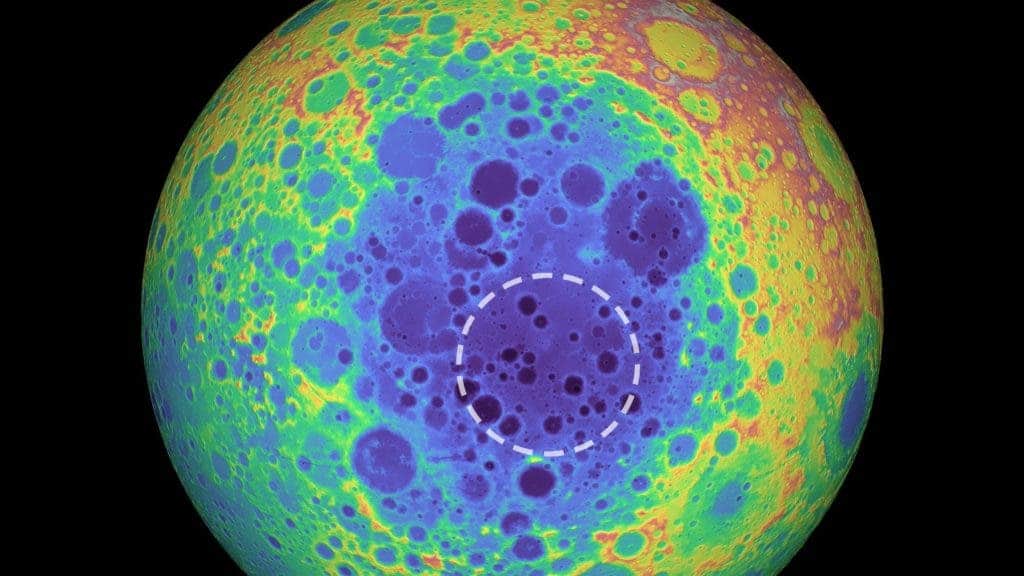A mysterious, large mass of material in the Moon’s South Pole could be a treasure trove of metals.

Wedged deep into the Aitken basin, our natural satellite’s South Pole, one can find a mysterious mass of material, report researchers from the Baylor University. This large mass may be a remnant of the asteroid that crashed into the Moon and formed the crater — which would also mean that it could be made up almost entirely out of metal.
Ka-tching
“Imagine taking a pile of metal five times larger than the Big Island of Hawaii and burying it underground. That’s roughly how much unexpected mass we detected,” said lead author Peter B. James, Ph.D., assistant professor of planetary geophysics in Baylor’s College of Arts & Sciences.
The Aitken basin crater is oval-shaped and about 2,000 kilometers wide — roughly the same distance Waco, Texas, and Washington, D.C. It’s also several miles deep. Despite its size, however, we can’t see this crated from Earth because it’s on the far (dark) side of the Moon.
But one place where this crater is abundantly evident is on gravity maps. Using data from NASA’s Gravity Recovery and Interior Laboratory (GRAIL) mission and topography readings from the Lunar Reconnaissance Orbiter, the team uncovered an “unexpectedly large amount of mass hundreds of miles underneath the South Pole-Aitken basin,” James says.
“One of the explanations of this extra mass is that the metal from the asteroid that formed this crater is still embedded in the Moon’s mantle.”
The dense mass—”whatever it is, wherever it came from”—is weighing the basin floor downward by more than half a mile, he said. Computer simulations of large asteroid impacts suggest that, under the right conditions, an iron-nickel core of an asteroid may be dispersed into the upper mantle (the layer between the Moon’s crust and core) during an impact.
“We did the math and showed that a sufficiently dispersed core of the asteroid that made the impact could remain suspended in the Moon’s mantle until the present day, rather than sinking to the Moon’s core,” James said.
However, we won’t know for sure whether this is the case or not until we actually put some boots (or wheels) on the Moon to study the unknown mass in situ. The team notes that a concentration of dense oxides associated with the final stages of a magma ocean solidifying inside the moon would also produce the same readings.
But there are reasons to believe that the mass is, indeed, tied to an asteroid impact. The South Pole-Aitken basin is the largest still-preserved crater in the whole solar system (meaning that, while larger impacts may have occurred here, this is the largest one we still have evidence of). James called the basin “one of the best natural laboratories for studying catastrophic impact events, an ancient process that shaped all of the rocky planets and moons we see today.”
The paper “Deep Structure of the Lunar South Pole‐Aitken Basin” has been published in the journal Geophysical Research Letters.


